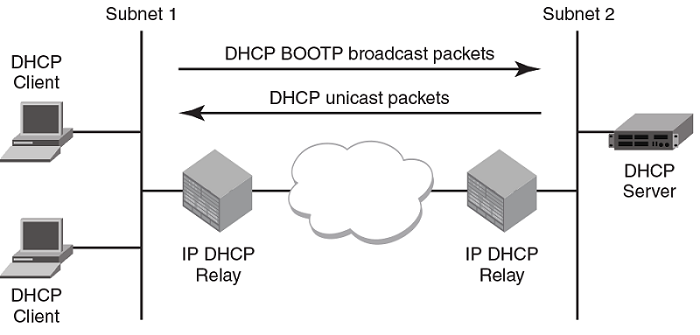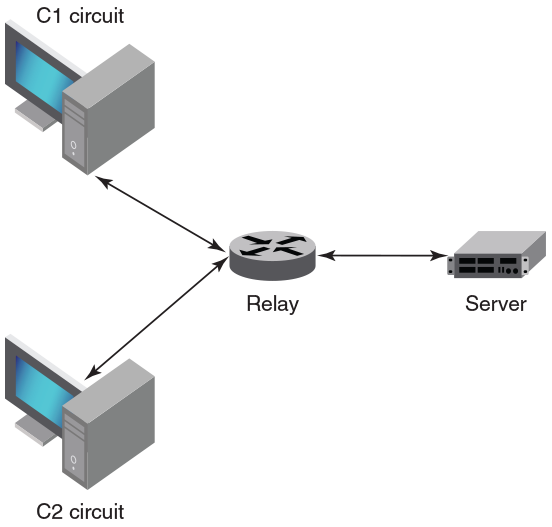DHCPv4 Relay Overview
The DHCPv4 relay feature allows forwarding of requests and replies between DHCP servers and clients connected to the switch when these servers and clients are not on the same subnet.
You can configure the DHCPv4 relay feature on any Layer 3 interface, such as a switch front-end Ethernet interface (VE port) or a physical interface.
The following supported configuration examples are supported:
- DHCP server across a WAN. Client 1 and Server 5 are on different subnets across the WAN.
- DHCP server is in a different Virtual Routing and Forwarding (VRF) instance. Client 1 and Server 2 are in different VRFs.
The DHCP relay agent forwards DHCP Bootstrap Protocol (BOOTP) broadcast packets from the DHCP clients to the appropriate server and processes broadcast or unicast packets from the server to forward to the DHCP client. BOOTP is a network protocol used to obtain an IP address from a DHCP server.

Example
A relay agent is configured on a VE interface, VE 100, which acts over two physical interfaces, Ethernet 1/1 and Ethernet 1/2, corresponding to two client circuits, C1 and C2. Broadcast replies from the server are forwarded to both the circuits, irrespective of the circuit from which the client packet is received by the relay agent, when both the circuits belong to the same broadcast network.

In this scenario, C1 is connected to Ethernet 1/1 and C2 is connected to Ethernet 1/2 physical interfaces. The relay agent is configured at VE 100. VE 100 is configured on VLAN 100, where Ethernet 1/1 and 1/2 ports are tagged. In such a configuration, broadcast responses from the server are received by both C1 and C2.

